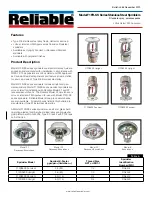
Seite 29 von 126
7. Water treatment – general information
A series of measures for keeping the swimming pool water clean which are referred to as "water
treatment" is necessary. Chemical treatment of the water is necessary in addition to the mechanical
water treatment of the swimming pool water by the filtration system. Growth of microorganisms,
particularly algae and bacteria, must above all be prevented.
7.1 pH value
In addition to disinfection, the pH value is one of the most important parameters in chemical water
treatment! The ideal pH value for the water in a swimming pool lies between 7.0 and 7.4, as within this
range:
d) neither acid nor alkaline irritation of human skin is to be anticipated;
e) no material damage is to be expected;
f) not least, disinfectants and algaecides show the best effect.
The pH value does not provide any more detailed information about the chemical composition of the
water. It tells us however whether the water tends towards high alkalinity (pH value above 7.4). The
pH value is therefore a measure of the reaction of the water that indicates the degree to which it has
become alkaline or acid.
An excessive pH value (of more than 7.4) should be reduced by adding acid (pH reducer). Harmless
to handle, readily soluble acid granulate is commercially available for this purpose. Excessive pH
values usually occur in water with carbonate hardness in which regulation of the pH value can only be
achieved through repeated additions of acid (pH reducer). The pH value increases repeatedly in the
meantime.
An excessively low pH value (usually of less than 7) is primarily measured in soft water. In this case,
single addition of a suitable alkaline product (pH increaser) is sufficient in order to raise the pH as
necessary and what is likewise important with soft water, stabilise the value so that major fluctuations
in pH can no longer occur. For this purpose, addition of 50 g of the alkaline medium per m
3
is
generally adequate; up to 100 g / m
3
may possibly be required.
7.2 Controlling algae
Algae enter any open waters, where they grow and multiply very rapidly as they are very
undemanding organisms. Measures for controlling algae are essential in any swimming pool. Reliable
prevention of algae growth is achieved using a modern liquid algaecide. Existing algae deposits can
only
be effectively removed by high chlorination and mechanical treatment of the affected surfaces.
High-efficacy anti-algae agents can only be used preventively.
7.3 Malfunction
Organic contaminants such as dead skin flakes, tanning oil, soot and plant parts etc. enter any
swimming pool water. These are often initially very finely dispersed, but accumulate over the course of
time and, in conjunction with precipitating chalk, are usually the cause of water turbidity. These
contaminants are also above all a breeding ground for microorganisms.
Organic contaminants are preferably eliminated using chlorine, which not only acts as a disinfectant,
but also degrades organic substances through oxidation (a process similar to combustion). The wide
range of commercially available chlorine products serve as a source of chlorine.
7.4 Continuous disinfection
Various different disinfection methods either chlorine-based or chlorine-free are available for constant
disinfection. The choice of the suitable disinfectant depends on a variety of factors: size and position
of the swimming pool, bather's sensitivity to chlorine, etc.
Children's pools and smaller swimming pools can also achieve good disinfectant effects with chlorine-
free products. For water volumes above 5 m³, solid chlorine products such as chlorine granulate and
chlorine tablets should be used. Precise details concerning dispensing can be found on the respective
disinfectant container.
Important: Check the disinfectant concentration regularly using a suitable measuring device
(pool tester) in order to avoid overdosage or underdosage.
















































